- Shop
- [Correspondence Archive of an Early American Osteopathy Student]
[Correspondence Archive of an Early American Osteopathy Student]
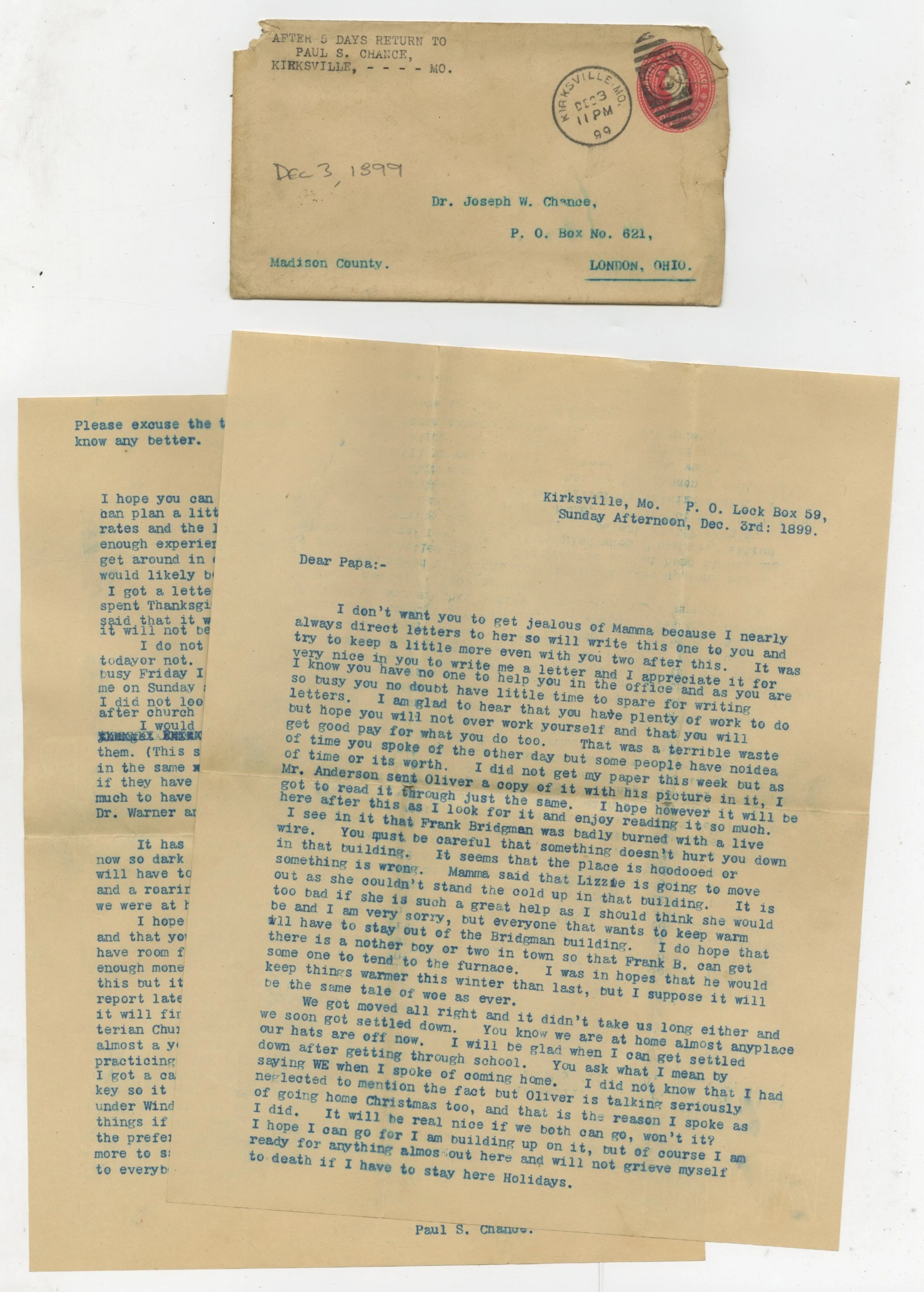
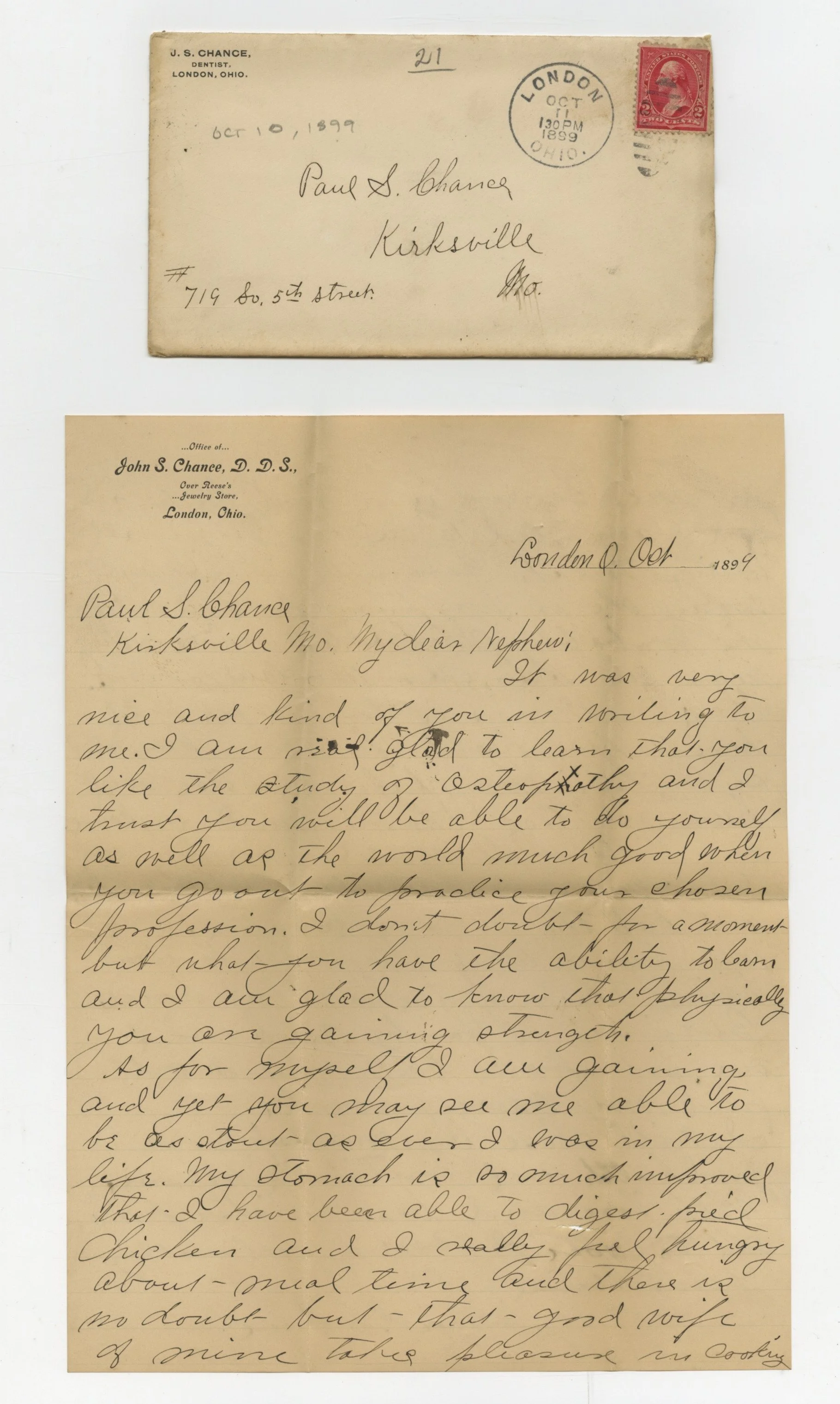
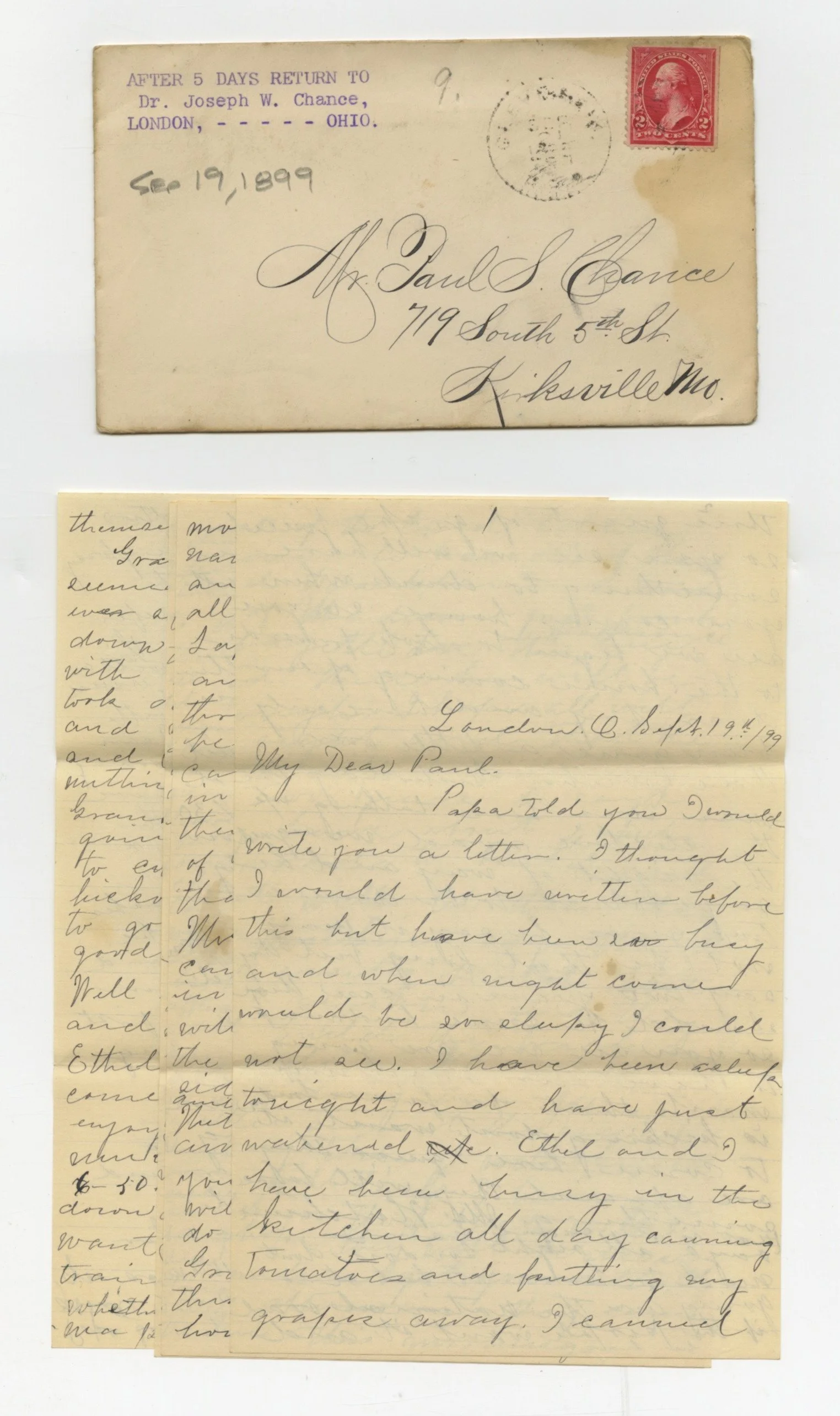
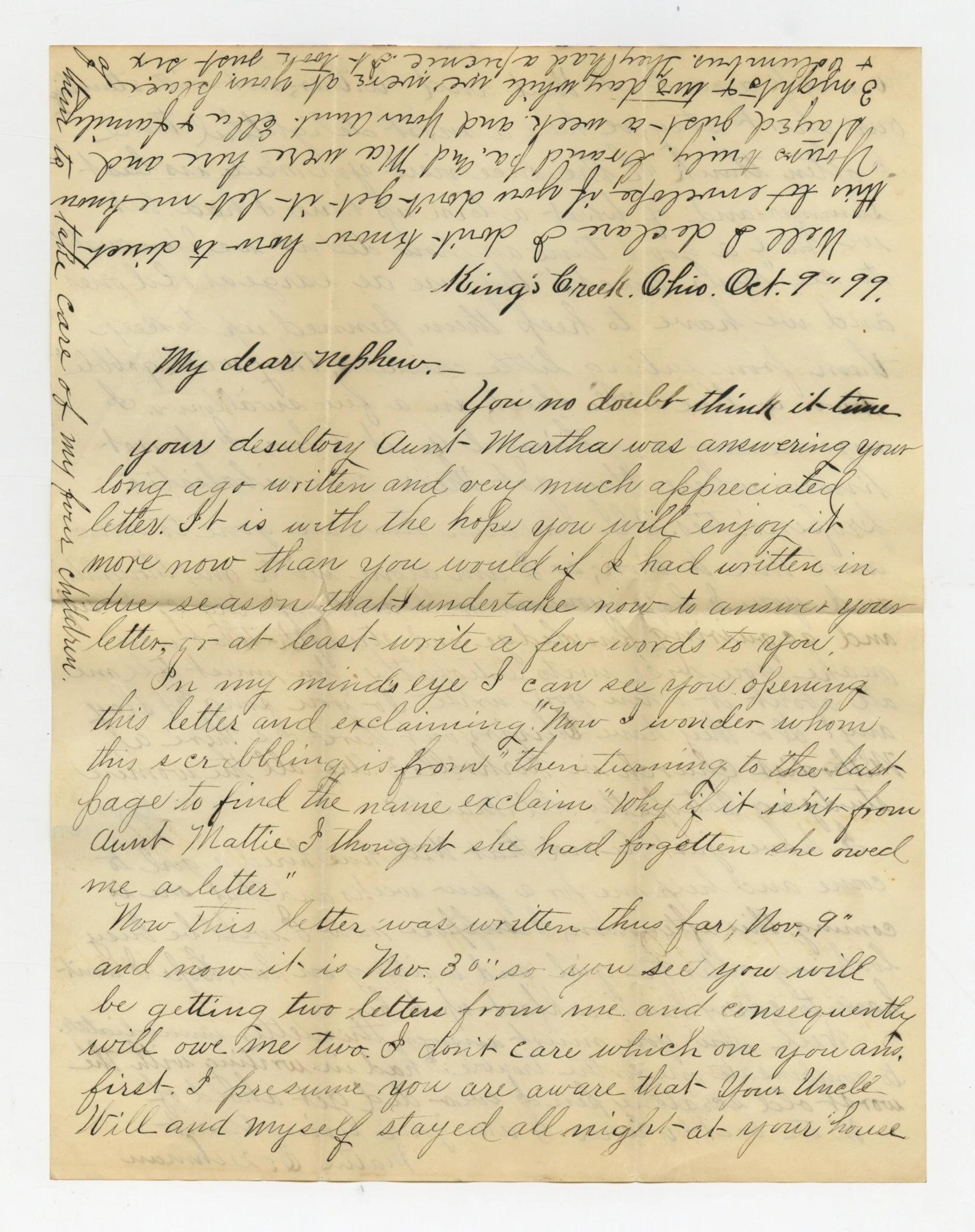
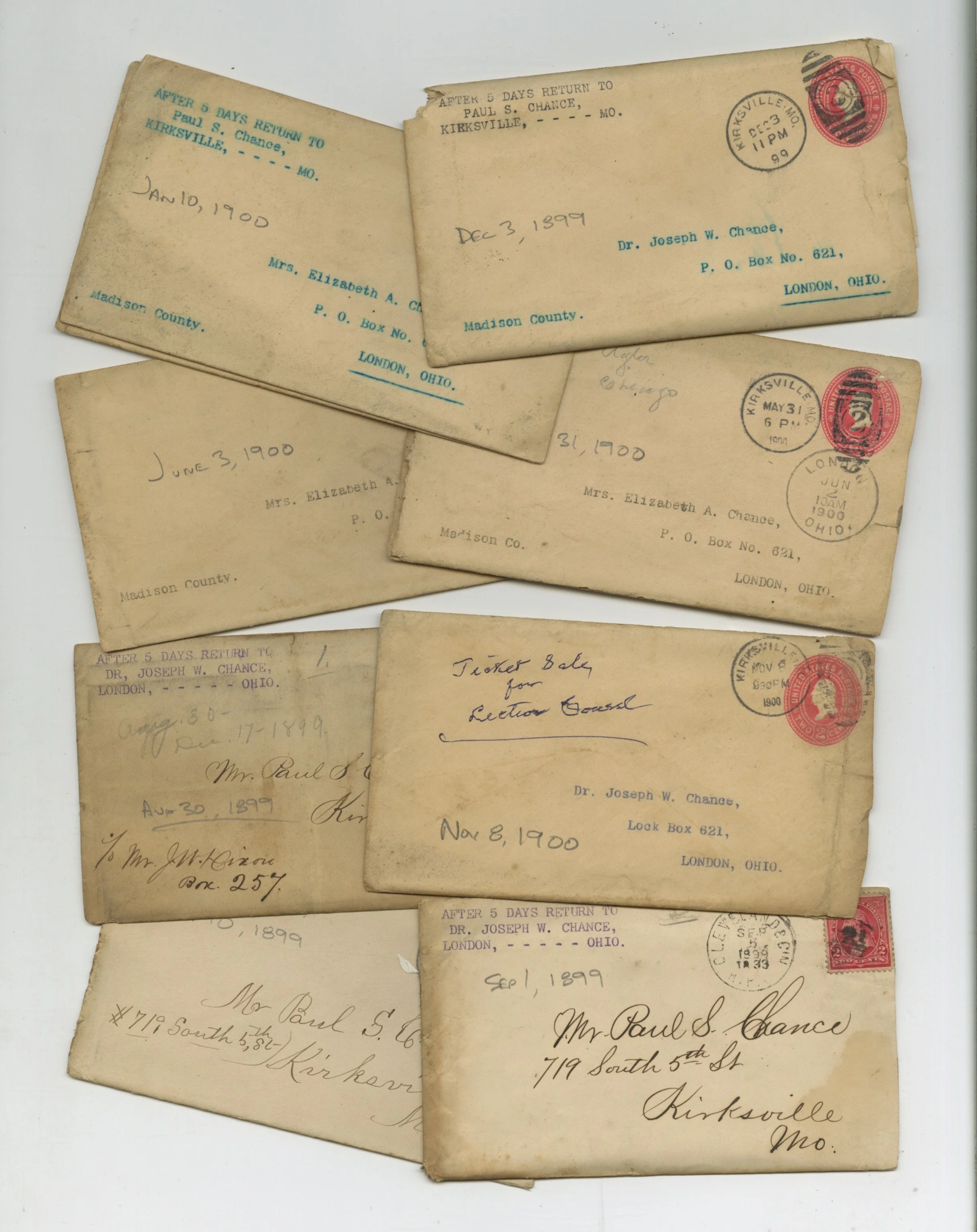

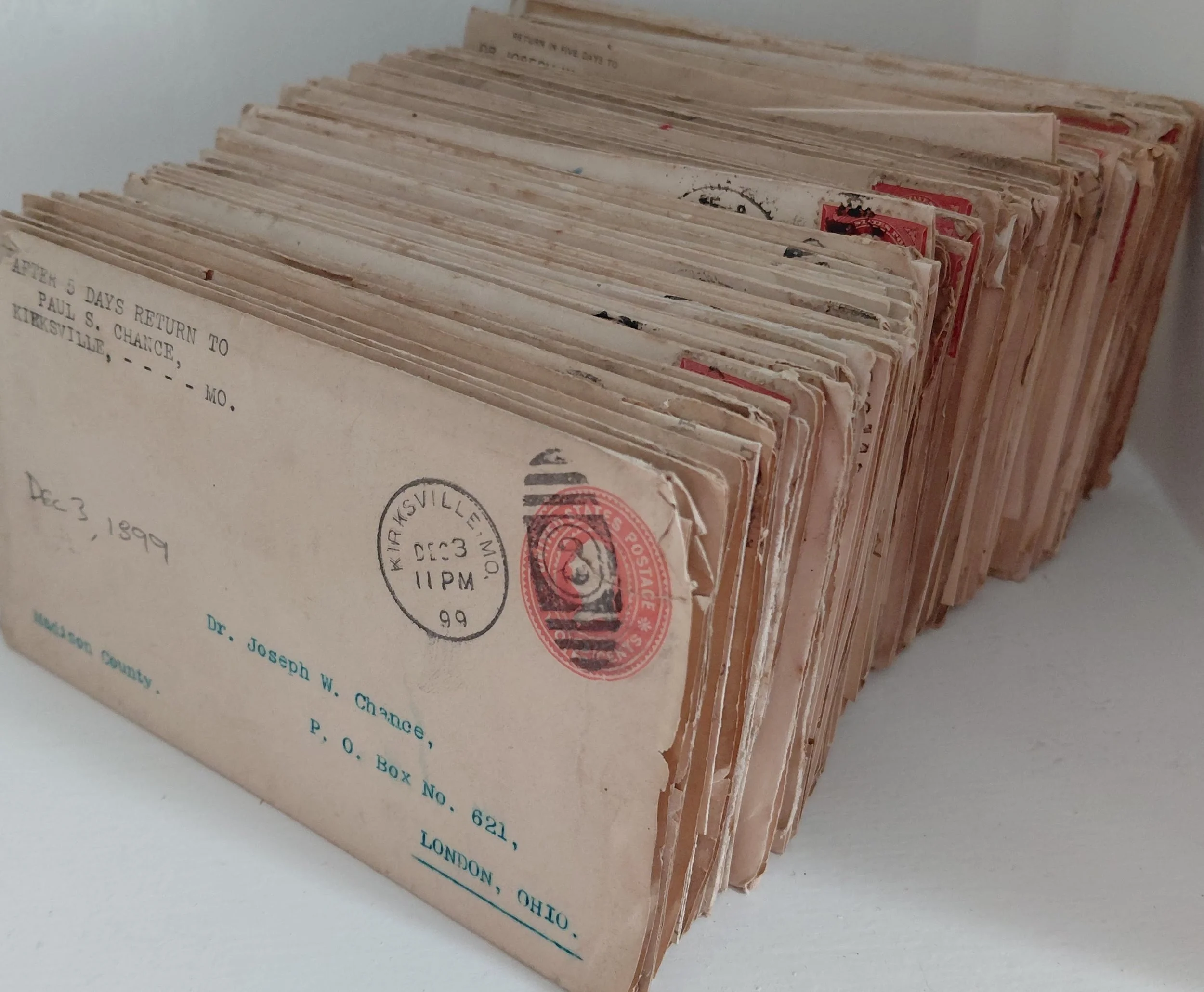
[Correspondence Archive of an Early American Osteopathy Student]
A substantial archive of correspondence written to or by a Paul S. Chance (1878-1959), mostly while studying at the American School of Osteopathy (known as A.T. Still University today) in Kirksville, Missouri. The bulk of correspondence dates from 1899-1901 and was written by his mother, Elizabeth from London, Ohio (a small Madison County city about halfway between Dayton and Columbus). Additional correspondents include his father Dr. Joseph W. Chance (a surgical dentist who appears to have dabbled in Osteopathy), a brother Jesse, and a sister, Ethel.
Six of the letters (all typed) are written by Paul from Kirksville, while the balance are all addressed to him from family in London. The Chance's seem to have been part of a burgeoning network of early Osteopaths in Ohio, with semi-frequent mentions in Elizabeth's letters of Dr. Morris, a neighbor who seems to have been the chief influence on Paul's decision to pursue the study. A letter from October 8, 1900 mentions Morris and the controversy surrounding Ohio's Love Act of 1900, legislation which essentially outlawed the practice of Osteopathy in the state:
“Dr. Morris came to call, he wanted to hire our cutter to cut feed for his cow. He seems to be quite proud of her. Dr. said to tell you that one of the Osteopaths have been arrested. Dr. Gravitt of Greenville, the county seat of Darke County. He is the oldest osteopath in the state he said he did not know how soon the rest would follow. I hope the D.O’s will come out conqueror. I think it a shame but I suppose there will have to be an example made of someone. I hope it will be settled before long.” (Elizabeth A. Chance)
Paul shares generously of his time in Kirksville with the most expressive of his six letters being from November 8, 1900:
“I am trying to get out of Osteopathy all there is to get and I hope to be able to commence my study in a practical way after I get through here. Although I learn all I can I know that it is a subject that cannot be mastered by one person in his lifetime. I realize too what will rest upon my knowledge in matters of life and death and this makes [me] all the more anxious to know allI can of the laws governing mechanisms of the human body. I tis all rather confusing at a first glance but study shows the beauties of the little things which enter into our make-up and makes it all simple too him who is willing to go into detail. How many people are there outside of the medical profession [who] know much about anatomy or physiology? We had such a fine lecture today on the subject of tumors giving classification of the different kinds and from what tissues they are developed. In tomorrow’s work we will begin to take up in detail the pathology of each kind and that will be interesting. I wish I only had time to read up thoroughly on the subject but I do well if I merely skim over the subject-matter in one text-book so limited is our time. I am not taking any private lessons as many are doing, in the matter of manipulations, as I feel that if I know my work I will get my own movements naturally. But I am in another class on Gynecology that I think will be of great value to me. It costs me $2.50 for ten lessons or classes in it. It is given by a doctor of the fourth term class who knows his business and has had experience. We have had some interesting cases before the classes, one a cost of floating kidney rather of infrequent occurrence. In anatomy we are reviewing our work on the dissections such as tracing nerves and blood-vessels of leg and arm and will have an examination first of next week."
About a dozen covers hold letters dated between 1904 and 1918, mostly sent to Paul in Chicago where he appears to have been practicing Osteopathy, though the balance are dated between 1899-1901 when he was in school in Kirksville. Additional highlights include commonplace mention of the London household's use of a telephone, reports on family members undergoing Osteopathic treatments, dispatches on his father's dentistry practice, and more... In all, a dense and unfiltered primary source record on turn-of-the-20th Century practice and study of Osteopathy in rural Ohio and at A.T. Still's important rural Missouri University. A document of additional transcribed quotes is available upon request.
[Manuscripts] : [Osteopathy]. [Correspondence Archive of an Early American Osteopathy Student]. Kirksville, Missouri and London, Ohio: (ca. 1899-1901). More than 100 manuscript or typed letters housed in about 85 different stamped and marked postal covers. Several covers containing multiple letters, nearly all multi-page (conservatively, at least 400 pages of correspondence total). Some occasional toning, insect nibbling, or brittleness to outer covers, but letters remain solidly intact and typically highly legible ; group about very good overall.
A substantial archive of correspondence written to or by a Paul S. Chance (1878-1959), mostly while studying at the American School of Osteopathy (known as A.T. Still University today) in Kirksville, Missouri. The bulk of correspondence dates from 1899-1901 and was written by his mother, Elizabeth from London, Ohio (a small Madison County city about halfway between Dayton and Columbus). Additional correspondents include his father Dr. Joseph W. Chance (a surgical dentist who appears to have dabbled in Osteopathy), a brother Jesse, and a sister, Ethel.
Six of the letters (all typed) are written by Paul from Kirksville, while the balance are all addressed to him from family in London. The Chance's seem to have been part of a burgeoning network of early Osteopaths in Ohio, with semi-frequent mentions in Elizabeth's letters of Dr. Morris, a neighbor who seems to have been the chief influence on Paul's decision to pursue the study. A letter from October 8, 1900 mentions Morris and the controversy surrounding Ohio's Love Act of 1900, legislation which essentially outlawed the practice of Osteopathy in the state:
“Dr. Morris came to call, he wanted to hire our cutter to cut feed for his cow. He seems to be quite proud of her. Dr. said to tell you that one of the Osteopaths have been arrested. Dr. Gravitt of Greenville, the county seat of Darke County. He is the oldest osteopath in the state he said he did not know how soon the rest would follow. I hope the D.O’s will come out conqueror. I think it a shame but I suppose there will have to be an example made of someone. I hope it will be settled before long.” (Elizabeth A. Chance)
Paul shares generously of his time in Kirksville with the most expressive of his six letters being from November 8, 1900:
“I am trying to get out of Osteopathy all there is to get and I hope to be able to commence my study in a practical way after I get through here. Although I learn all I can I know that it is a subject that cannot be mastered by one person in his lifetime. I realize too what will rest upon my knowledge in matters of life and death and this makes [me] all the more anxious to know allI can of the laws governing mechanisms of the human body. I tis all rather confusing at a first glance but study shows the beauties of the little things which enter into our make-up and makes it all simple too him who is willing to go into detail. How many people are there outside of the medical profession [who] know much about anatomy or physiology? We had such a fine lecture today on the subject of tumors giving classification of the different kinds and from what tissues they are developed. In tomorrow’s work we will begin to take up in detail the pathology of each kind and that will be interesting. I wish I only had time to read up thoroughly on the subject but I do well if I merely skim over the subject-matter in one text-book so limited is our time. I am not taking any private lessons as many are doing, in the matter of manipulations, as I feel that if I know my work I will get my own movements naturally. But I am in another class on Gynecology that I think will be of great value to me. It costs me $2.50 for ten lessons or classes in it. It is given by a doctor of the fourth term class who knows his business and has had experience. We have had some interesting cases before the classes, one a cost of floating kidney rather of infrequent occurrence. In anatomy we are reviewing our work on the dissections such as tracing nerves and blood-vessels of leg and arm and will have an examination first of next week."
About a dozen covers hold letters dated between 1904 and 1918, mostly sent to Paul in Chicago where he appears to have been practicing Osteopathy, though the balance are dated between 1899-1901 when he was in school in Kirksville. Additional highlights include commonplace mention of the London household's use of a telephone, reports on family members undergoing Osteopathic treatments, dispatches on his father's dentistry practice, and more... In all, a dense and unfiltered primary source record on turn-of-the-20th Century practice and study of Osteopathy in rural Ohio and at A.T. Still's important rural Missouri University. A document of additional transcribed quotes is available upon request.
[Manuscripts] : [Osteopathy]. [Correspondence Archive of an Early American Osteopathy Student]. Kirksville, Missouri and London, Ohio: (ca. 1899-1901). More than 100 manuscript or typed letters housed in about 85 different stamped and marked postal covers. Several covers containing multiple letters, nearly all multi-page (conservatively, at least 400 pages of correspondence total). Some occasional toning, insect nibbling, or brittleness to outer covers, but letters remain solidly intact and typically highly legible ; group about very good overall.
